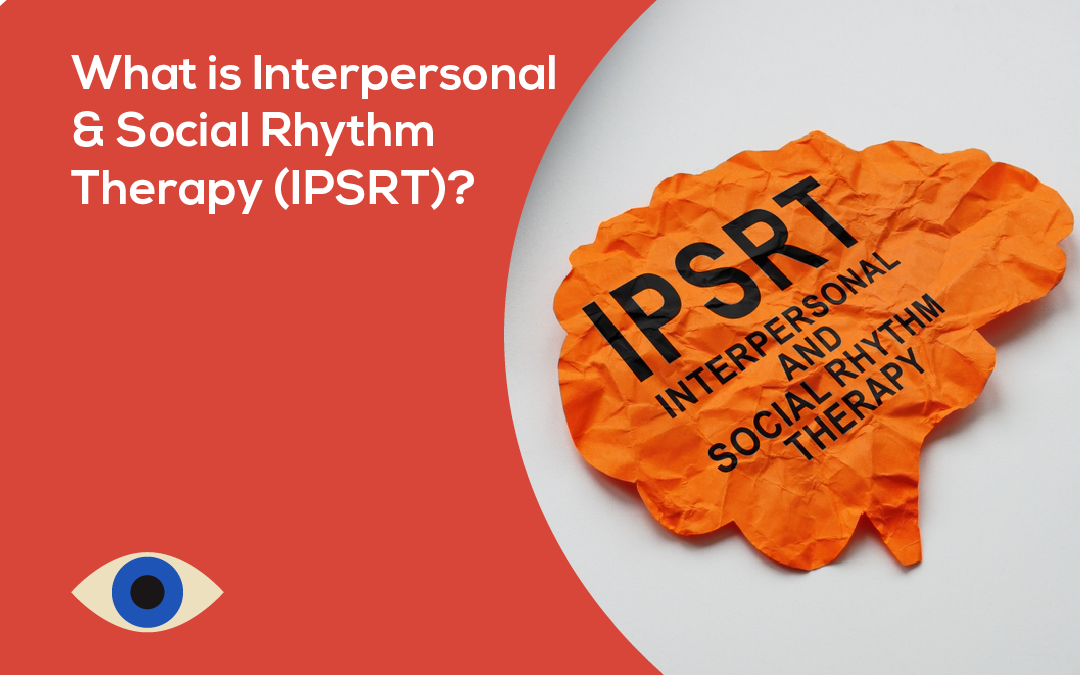IPSRT—it’s a therapy making a real difference for those struggling with their moods. It’s a major breakthrough; prepare for a shift. If your emotions often feel unpredictable, IPSRT could offer the stability you are looking for. Balancing your schedule and connections with others can really help stabilize your mood. This therapy’s purpose? To reach that goal.
Developed by Ellen Frank, IPSRT, or Interpersonal and Social Rhythm Therapy, is more than a standard treatment. Moods are affected by everyday actions and social connections—that’s the idea here. This therapy? It’s the right fit. You’ll feel better. People who need extra support will find this really useful. Think of it as a friendly hand when times are tough.
Table of Contents:

- What Exactly is IPSRT?
- How IPSRT Works Its Magic
- Who Can Benefit from IPSRT?
- The Science Behind IPSRT
- Key Interpersonal Problem Areas Addressed in IPSRT
- The Benefits of IPSRT
- What to Expect in IPSRT Sessions
- Integrating IPSRT with Other Treatments
- Is IPSRT Right for You?
- Conclusion
What Exactly is IPSRT?
IPSRT therapy uses two main parts. Try interpersonal psychotherapy; it works well with social rhythm therapy. Therapy’s impact extends to various aspects of a person’s life; it’s not just one thing. Improving relationships and daily routines is the goal of IPSRT therapy. Managing bipolar disorder and depression requires these things.
The “interpersonal” aspect of IPSRT concentrates on your connections with others and your social roles. Social situations got you down? Improved communication will help you navigate those sometimes-difficult social interactions with grace and ease; think of it as a superpower for everyday life. The “social rhythm” component focuses on establishing a consistent daily routine, which includes regular sleep schedules, consistent meal times, and predictable daily activities; this is often referred to as rhythm therapy IPSRT.
It’s important to understand that IPSRT is not intended as a replacement for pharmacotherapy treatment. Medication and this approach together give you a full mental health strategy. A supplemental treatment can make a big difference in how effective your current mood treatment is. It’ll boost things considerably; you’ll notice the upgrade.
How IPSRT Works Its Magic
IPSRT is founded on the idea that our moods are intricately linked to our daily rhythms and social engagements. Disruptions in these areas, often stemming from stressful life events, can significantly destabilize mood. For those experiencing the highs and lows of bipolar disorder or related conditions, this is particularly relevant. These mood episodes can be very dramatic.

Regular meetings with a therapist who has special training are part of the process. We’ll concentrate on two main things during these sessions.
- Better relationships are within reach; let’s make them happen. Better communication skills? Everyone finds a use for them; they’re great!
- Stabilizing daily social routines and daily rhythms.
Identifying patterns in your emotional state, your schedule, and how you interact socially will be a collaborative process with your therapist. You’ll get far if you understand these patterns. Recognizing what triggers mood swings is a key first step. Then, create a schedule; this will help you stay balanced and calm. This understanding lets you stay steady; you’ll react better to intense emotions. Think of it like having a better toolkit for emotional first aid.
The Social Rhythm Metric: Your New Best Friend
A central tool utilized in IPSRT is the Social Rhythm Metric (SRM). This is essentially a structured daily log. You use this rhythm metric to meticulously track your daily activities and observe how they correlate with your mood fluctuations throughout the day.
Using the SRM, you and your therapist will discover recurring behaviors, recognize places where things fall apart, and make changes to your routine. You’ll feel steadier with this. Some of the activities you might track on your Social Rhythm Metric include:
- The exact time you wake up each morning.
- The time of your first meaningful contact with another person.
- The start time of your primary daily activity, such as work, school, or significant chores.
- The time you typically have your dinner or main evening meal.
- The time you go to bed.
Sticking to your daily routine can really help keep your mood steady. A regular schedule is like a comfy blanket for your brain, settling your internal clock and making you feel better. Time use is a big deal; we need to track it. This is quite revealing; we have a good grasp of things now.
Who Can Benefit from IPSRT?
While IPSRT was originally developed by Ellen Frank primarily for individuals with bipolar disorder, its application has broadened. Lots of studies show this helps people with their moods. Bipolar symptoms respond well to this, and the underlying principles are applicable elsewhere.
IPSRT can really help in a lot of different situations.
- Managing both the highs and lows of bipolar disorder, types I and II, is possible.
- Major Depressive Disorder, including persistent depressive symptoms and unipolar depression.
- Cyclothymia, a milder form of bipolar disorder characterized by numerous periods with hypomanic and depressive symptoms.
- Seasonal Affective Disorder (SAD), where mood is affected by changes in seasons and light exposure.
- Individuals experiencing significant disruptions due to changing a time zone or effects similar to jet lag.
IPSRT helps people who have trouble sticking to a sleep schedule or daily routine. This really helps people whose feelings are strongly affected by their relationships and tough times. In some cases, principles of rhythm stabilization might be explored as an adjunctive treatment to support individuals with schizophrenia spectrum disorders who also experience mood instability, although this is not its primary application and would be part of a broader care plan supervised by a review board of specialists.

Recovery from substance abuse might be easier with the help of social rhythm therapy. Following a schedule can really make a difference. Solid social routines? They’re incredibly useful; a true asset.
The Science Behind IPSRT
IPSRT is not an arbitrary collection of techniques; it is firmly rooted in scientific theory, specifically the social zeitgeber theory. The term “zeitgeber” is German for “time giver” or “synchronizer.” This theory posits that our internal biological clocks, or circadian rhythms, are synchronized by external environmental and social cues.
These zeitgebers include exposure to light and darkness, meal times, physical activity, and, crucially, social interactions and routines. When these external cues are erratic or disrupted—due to irregular schedules, stressful life events, or social conflicts—our internal circadian rhythm can become desynchronized. This desynchronization is believed to contribute significantly to the onset or exacerbation of mood episodes in vulnerable individuals.
IPSRT directly addresses this by working to stabilize these social zeitgebers, thereby promoting a more regular and robust circadian rhythm. Regulating your body’s natural rhythms is easier with this therapy. A balanced life is easier to achieve with a structured daily schedule and more social interaction. Google Scholar and similar sites have research showing that a stable sleep cycle helps mood. Treatment for mood disorders often includes fixing sleep problems.
The regularity promoted by IPSRT can influence neurotransmitter systems and hormonal balances that are often dysregulated in mood disorders. Therefore, establishing social rhythms is a fundamental aspect of this empirically validated treatment. A consistent daily rhythm is surprisingly effective at managing mood issues. Think of it like a mood regulator.
Key Interpersonal Problem Areas Addressed in IPSRT
A core component of IPSRT is derived from interpersonal psychotherapy (IPT), which focuses on resolving interpersonal problems in one or more key areas. Working through relationship problems? This will significantly improve your mood; you’ll feel less stressed too. IPSRT typically targets issues within these four general domains:
- Grief or Complicated Bereavement: Helping people cope with loss is a big part of this. This includes things like the death of a loved one, but also the loss of a job or a significant relationship. The healing process is helped along by this therapy. It gives you tools to either form new attachments or to accept the loss.
- Interpersonal Role Disputes: These occur when an individual and at least one significant other person in their life have non-reciprocal expectations about their relationship. IPSRT helps identify the nature of the dispute, the stage it’s in (e.g., renegotiation, impasse, dissolution), and develop strategies for resolving the conflict or navigating it more effectively. Strong relationships require effective conflict resolution; if you can’t work through disagreements, the relationship will suffer. Consider how easily misunderstandings can escalate if left unaddressed.
- Role Transitions: Big life changes are a given: starting a new career, tying the knot (or untying it!), having children, or entering retirement. Switching roles is hard; it throws off your usual schedule. Want a smoother job change? IPSRT can help! Your past experience will become clearer, you’ll master the skills for your new job, and you’ll build a solid support system along the way. This makes adapting to the new role a breeze. Successfully easing role changes can significantly reduce mood symptoms.
- Interpersonal Deficits: If your social life has been spotty or full of conflict, this information is for you. Learn to recognize your relationship patterns, improve your social skills, and build a better support network—that’s what therapy’s all about. The goal? More social interaction, less isolation. It’s that simple.
Think of it this way: Better relationships mean less stress. Stress less; enjoy a happier, more consistent daily routine. IPSRT helps you achieve this. Relationship struggles? Lots of people get real support from this. The impact is considerable; it’s not insignificant. It’s quite effective.

IPRST: What are the advantages? Plenty!
IPSRT helps people with mood disorders feel better for the long haul. It’s not just a quick fix. Fewer and milder mood swings mean more good days. People feel better about their relationships and can connect with others more easily.
You’ll likely sleep better! A regular schedule helps your body’s natural clock, the circadian rhythm, work more efficiently. Sleep and wake times are controlled by the body’s need for regular signals. Learning IPSRT improves your ability to manage stress. Facing emotional rollercoasters? Trouble keeping your cool? Solutions are here. Learn to relax under pressure. We’ll provide the coping mechanisms you need to stay upbeat when your schedule is packed. For example, try setting aside 15 minutes each day for mindfulness. Furthermore, the structured nature of the therapy and the collaborative relationship with the therapist can lead to improved medication adherence if pharmacotherapy treatment is also part of the plan.
Research consistently shows that individuals undergoing IPSRT experience longer intervals of stable mood compared to those receiving other forms of care or no specialized psychotherapy. Life’s bumps in the road and changes to their daily routines become easier to handle. Treating bipolar disorder and other mood disorders? A full treatment program benefits greatly from IPSRT.
What to Expect in IPSRT Sessions
If you are considering IPSRT, understanding the session structure can be helpful. While each therapist may adapt their style, common elements are present in this empirically validated therapy. The initial phase of therapy often involves psychoeducation about the mood disorder and the IPSRT model itself.
Typically, sessions begin with a mood check-in, where you discuss your current mood state, any mood symptoms, and significant events since the last meeting. A review of your Social Rhythm Metric (SRM) is a standard part of most sessions. You’ll go over your daily log with your therapist, spotting patterns, figuring out what throws things off, and seeing how your day-to-day, who you’re with, and how you feel all connect.
Role confusion got you down? Having trouble with transitions? A big part of our session will focus on your relationships. Facing some roadblocks? Need a hand? Facing problems? Facing a challenge? Let us lend a hand. Consider us prepared. Problem-solving skills are what your therapist will focus on, helping you make plans to deal with things. We’ll get together and figure out exactly what we want to accomplish this week, and how we’ll know if we’ve succeeded. It’s important to be precise! These will cover both personal organization—getting your daily life in order—and social development—strengthening current relationships and forming new ones. Think it over. better sleep schedule, more calls to friends, joining a club.
IPSRT usually starts with weekly sessions, which may become less frequent as you achieve mood stability and progress into the maintenance phase. A full course of therapy IPSRT often lasts around 16-24 sessions, but the duration can vary depending on individual needs and the complexity of the issues being addressed. People facing ongoing stress might need to stay on treatment longer to hold onto their improvements.
Integrating IPSRT with Other Treatments
IPSRT is highly effective but often works best as part of a comprehensive treatment plan. Medication frequently works with this treatment. Managing intense mood symptoms gets easier, leading to greater emotional stability. This is the groundwork. Using this combination, IPSRT tackles the emotional and psychological aspects of a problem, things medication might not fully cover.
Compared to other therapies like cognitive therapy or behavioral therapy, IPSRT has a distinct focus on the interplay between circadian rhythms and interpersonal events. While cognitive therapy addresses thought patterns and behavioral therapy focuses on modifying specific behaviors, IPSRT hones in on routine regularity and relationship quality as primary levers for mood stabilization. However, skills from these other therapies can sometimes complement IPSRT.
For individuals whose mood disorder impacts their family dynamics, or vice-versa, family therapy can be a beneficial adjunct to IPSRT. A supportive home life can be fostered by educating family members about the illness and IPSRT techniques through family therapy. The support you get from a group—the shared experiences, understanding, and coping strategies—works alongside therapy. Managing depression and mania gets easier with these tools.
In cases of co-occurring conditions, such as substance abuse, IPSRT can be integrated with specialized addiction treatment. Recovery often goes hand-in-hand with stable daily rhythms. Think of it like this: irregular routines can easily trigger a relapse. Our goal? A multifaceted support system addressing every part of someone’s health and happiness. We’re talking complete well-being here.
Is IPSRT Right for You?
For mood disorders, IPSRT is a powerful tool, yet it doesn’t work for everyone. Keeping a daily log of your activities and actively nurturing your relationships takes real effort. If you are prepared to invest this effort, the rewards in terms of mood stability and improved quality of life can be substantial.
IPSRT might be a suitable option if:
- You have a mood disorder, such as bipolar disorder or recurrent unipolar depression, that is not fully managed by medication alone.
- You find it challenging to maintain a consistent daily routine or regular sleep-wake cycle.
- Your mood is notably affected by changes in your schedule, social interactions, or significant life events.
- Regular therapy sessions and tracking your SRM are part of your treatment plan; your participation is important.
- Practical ways to manage your condition are what you’re after—treatments proven to work.
If you are interested in exploring IPSRT as an effective treatment for your mood symptoms, the first step is to discuss it with your doctor or mental health provider. Your needs and treatment goals? Find out if this therapy is a good fit—they can help! Need a therapist skilled in IPSRT? They’ll help you find one—it’s important to have someone with the right training.
Picking the right therapist is really important for a good outcome. Inquiring about a therapist’s experience with IPSRT, their approach to the initial phase and maintenance phase of treatment, and how they handle issues like role transitions or role disputes can help you make an informed decision. Social stability: This therapy can really help with that. Think it over; it might be helpful.

Conclusion
Feeling down? Let’s change that. IPSRT’s method zeroes in on everyday actions and the people in your life. Have you considered…? Subtle shifts yield surprisingly positive outcomes. Consider a painter adding just a single brushstroke to perfect a masterpiece; the effect is often profound. For example, improving sleep and spending quality time with loved ones can lead to a significant shift in your emotional well-being. Mood stability is possible with this two-pronged strategy. Emotional equilibrium is established and maintained, resulting in a consistently calm emotional experience. Think of it like a steady ship on a calm sea. Lots of people report that IPSRT makes a real difference. They feel more in charge of their moods and better equipped to deal with stress. This makes them feel much better.
Living with a mood disorder takes work, but IPSRT can be a big help. Combining this treatment with medication, making healthy lifestyle choices, and seeking additional support—like family therapy or support groups—frequently leads to the best outcomes. With the appropriate combination of treatments and a strong support system, living a fulfilling life despite a mood disorder is entirely achievable.




0 Comments